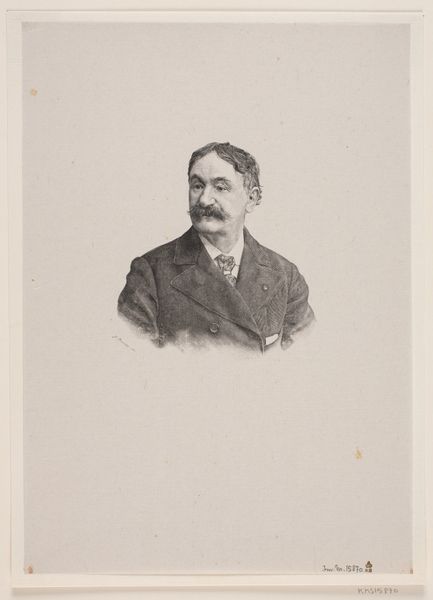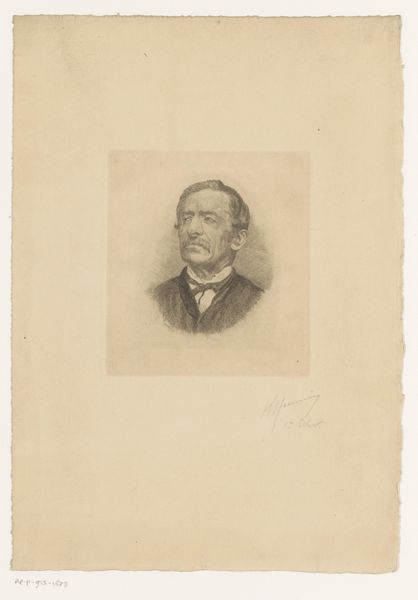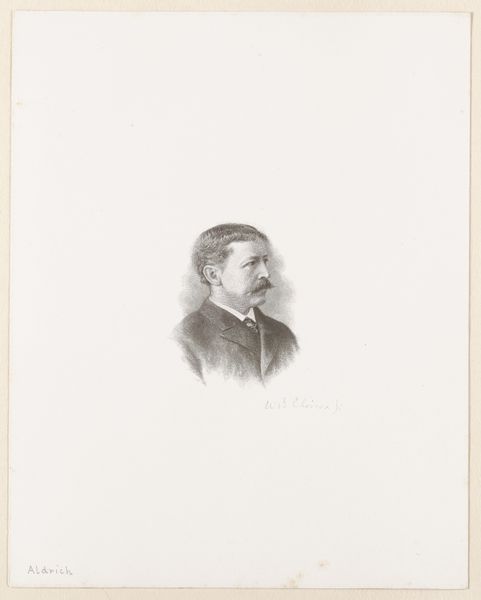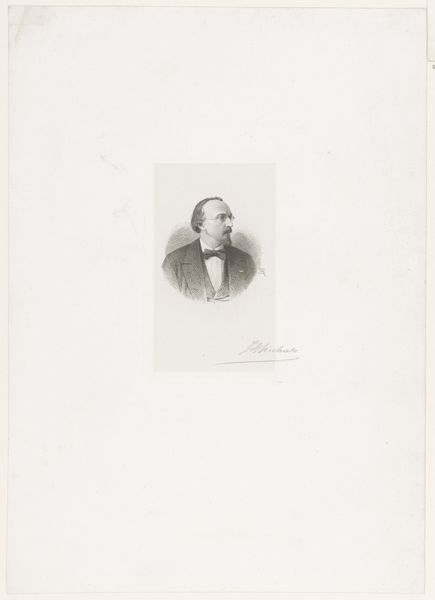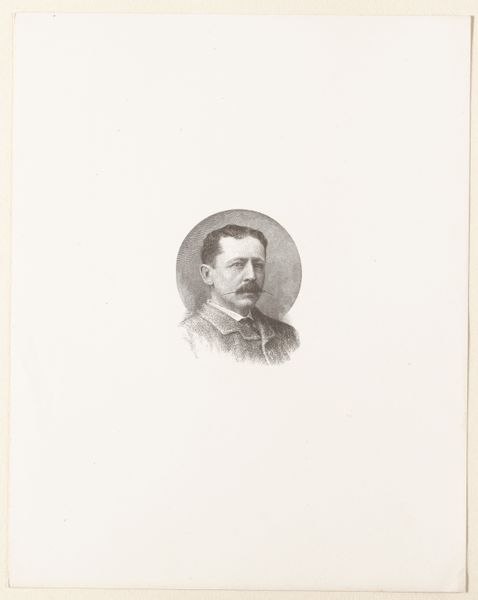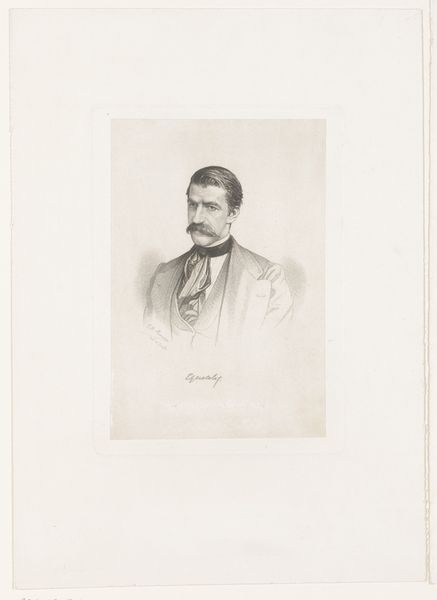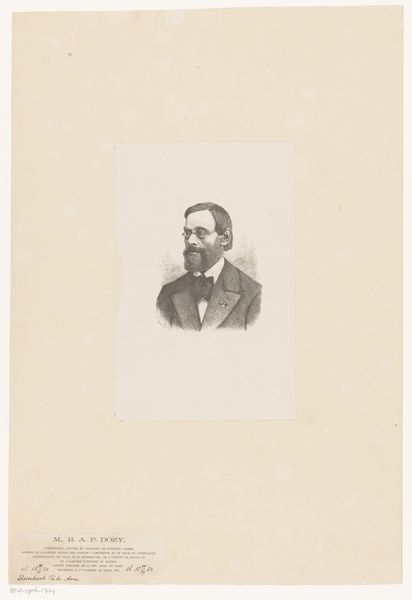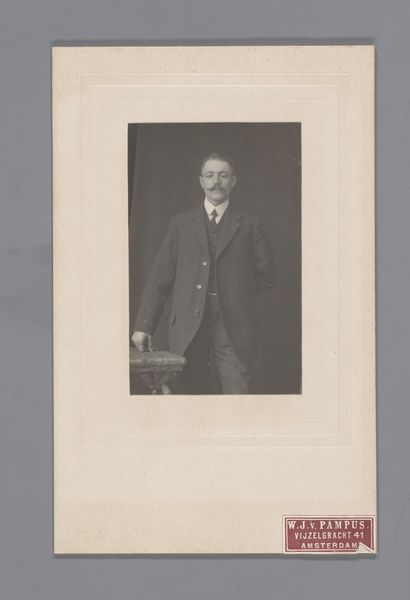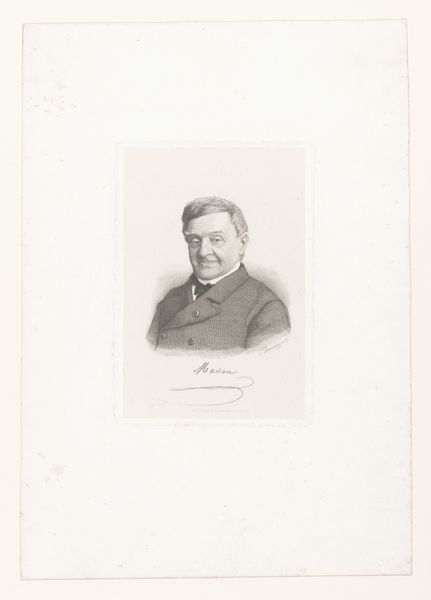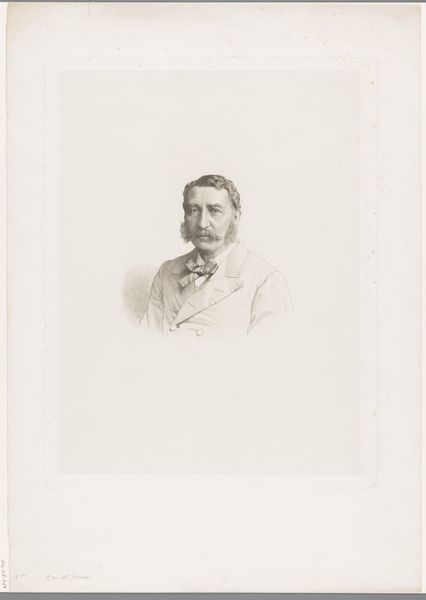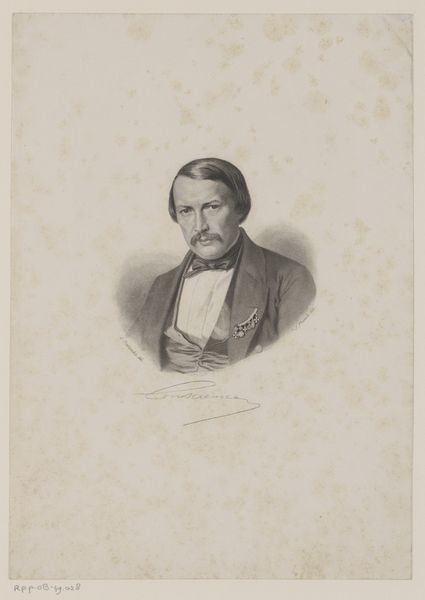
#
portrait
# print
#
realism
Dimensions: height 505 mm, width 360 mm
Copyright: Rijks Museum: Open Domain
Editor: This is a print of "Portret van Rijnholt Antony Klerck" by Johan Hendrik Hoffmeister, dating from about 1851 to 1883. It’s interesting to see the subject so formally attired, even for a portrait. What can you tell me about this print, looking at it through the lens of materials and production? Curator: Well, consider that a print like this one was essentially a reproducible commodity. The means of production are key here. It was likely made using an intaglio process, perhaps etching or engraving, requiring skilled labor and specific tools. The resulting prints circulated widely, extending the reach of the depicted image beyond the traditional art world. Editor: So it’s not just about depicting this individual, but also about distribution and access. Does the realism style factor into that accessibility? Curator: Precisely! Realism here isn’t just aesthetic; it speaks to the social context. The ability to produce a recognizable likeness, relatively affordably, meant that portraiture wasn't exclusively for the elite. The very materiality of the print—the paper, the ink—becomes a vehicle for social mobility. Do you see the texture in the hatching, and how it gives form to the body? Editor: I do, and it really highlights the artist's technical skill. It's amazing how they created a convincing likeness simply with lines and tonal variations. But where do we draw the line between skilled labor and "art" in a piece like this? Curator: Exactly! It forces us to question the traditional hierarchy between art and craft. Is the meticulousness of the printmaker any less artistic than the brushstrokes of a painter? The material conditions of production challenge those boundaries. The accessibility of printing also highlights the role of art in portraying figures and spreading ideologies during this period. Editor: I see what you mean. Looking at it this way definitely broadens my understanding of the artwork. It makes me consider the labor and accessibility far more. Curator: Indeed. Thinking about art through a materialist lens invites us to consider art's connection to work, consumption, and the broader social fabric.
Comments
No comments
Be the first to comment and join the conversation on the ultimate creative platform.

